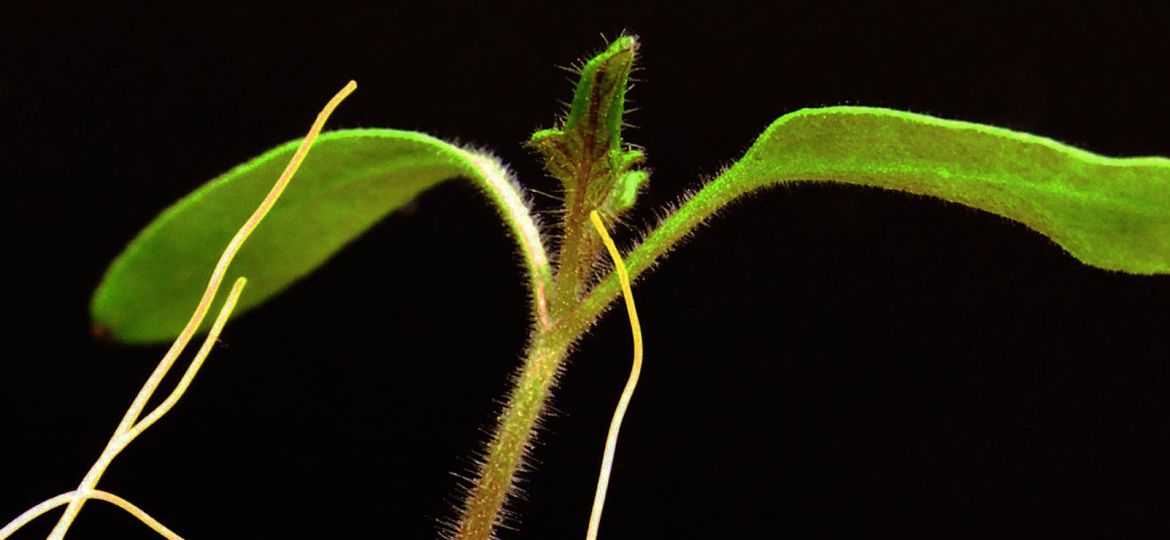
WHY THIS MATTERS IN BRIEF
Understanding how biological organisms function and respond to stimuli will help biologists find new ways to help them grow and improve yields.
Pavlov’s conditioning experiments with dogs are among some of the most well known, and highly regarded, studies in scientific history, and now research from the University of Western Australia (UWA) has shown that plants, just like the dogs in Pavlov’s experiments, can learn similar associations. The research was published in the journal Scientific Reports.
Putting seedlings into the bottom of a Y shaped maze, scientists from UWA managed to condition the plants to associate light with the wind from a fan, and found that the majority of the plants learned to use the fan to predict where light would next appear.
In the early 20th century, Ivan Pavlov was studying the role of saliva in digestion in dogs, when he began to notice that the animals would salivate at the sight of the handler who usually fed them, regardless of whether they’d brought food or not. Those observations led to the famous experiments where Pavlov would ring a bell immediately before presenting the dogs with food. After repeating these actions a few times, the dogs learned to associate the bell with food, and would soon salivate at the sound alone, whether food came or not.
Along with leaving a mark on pop culture as deep as that of Schrödinger’s cat, Pavlov’s findings on classical conditioning have since formed the basis of ongoing behavioural studies in animals and humans. But now, the UWA study has shown, for the first time, that plants may be able to be trained in the same way, and in some cases that the learned behaviour can actually trump the organism’s innate phototropism – their tendency to grow towards light.
In the study, garden pea seedlings were planted in the bottom of the Y-shaped maze and for the first five to eight days all plants grew in a cycle of 8 hours of light and 16 hours of darkness. Then, they were divided into two groups, with the plants in one group exposed to a light and a fan on the same side of the Y, while the fan and the light appeared at opposite sides for the other group.
During the three day training period, the fan would blow for one hour before the light was switched on, then both the fan and the light ran together for 30 minutes before the fan was switched off and the light continued for another 30 minutes on its own. In both cases, the stimuli were swapped around to different arms of the Y shape, to prevent the plants growing towards a constant source of light.
Then, to test if the plants had learned to associate the fan with the light, they were divided again into a test group and a control group. The control received no stimulation, while the test group was exposed to the fan alone for three 90 minute sessions a day, with the fan always in the same place.
When inspected, the researchers found that every seedling in the control group had grown towards the arm of the Y where the light had last been detected – a result of basic phototropism. But in the test group, the majority of the plants had used the fan to predict where the light would come from – 62 percent of those that had been conditioned to associate the fan with the light had grown in the direction of the fan, while 69 percent of those that had learned that light was always in the opposite direction to the fan, had grown into the other arm.
“Because our findings are unexpected, we anticipate that this study will stir a lively and exciting debate on the origin and properties of memory, learning and ultimately intelligent behaviour in biological systems,” says Professor Monica Gagliano, lead author of the study.
“By challenging the way we currently view the agency of plants and their behaviours, which have enabled them to flourish, the research opens up new and bigger ecological questions of how modifications to our environment will shape future plant communities.”
The results suggest that plants can learn complex methods to maximize the rewards from foraging for food, in ways previously only thought to exist in animals.
“Beyond plants, these findings compel us to review our thinking about the essential mechanisms underlying information processing throughout living systems,” says Gagliano.
















